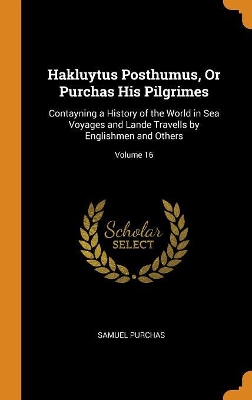Hakluytus Posthumus or, Purchas his Pilgrimes 20 Volume Set
13 primary works
Volume 1
Volume 2
Volume 3
Volume 4
Volume 5
Volume 8
Volume 9
Volume 10
Hakluytus Posthumus or, Purchas his Pilgrimes: Volume 10
by Samuel Purchas
Volume 13
Volume 15
Hakluytus Posthumus or, Purchas his Pilgrimes: Volume 15
by Samuel Purchas
Volume 16
Hakluytus Posthumus or, Purchas his Pilgrimes: Volume 16
by Samuel Purchas
Volume 18
Hakluytus Posthumus or, Purchas his Pilgrimes: Volume 18
by Samuel Purchas
Volume 20

